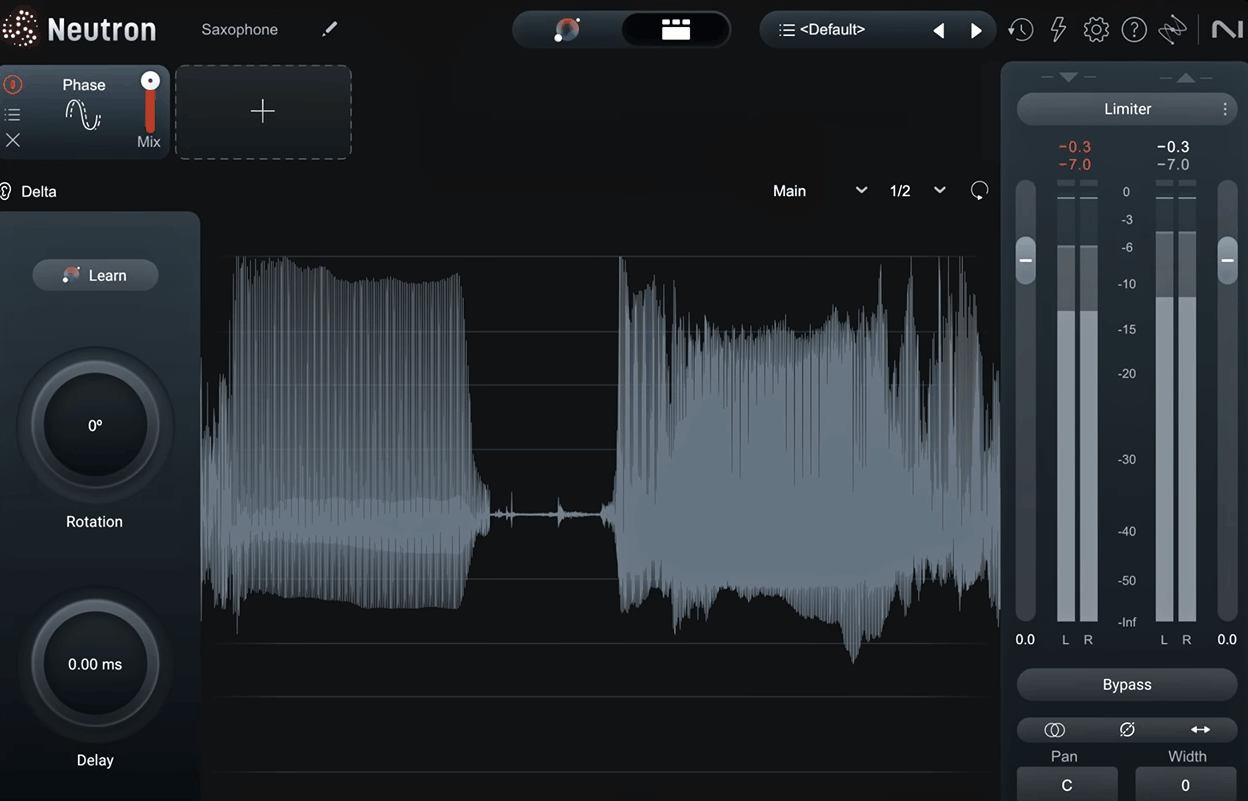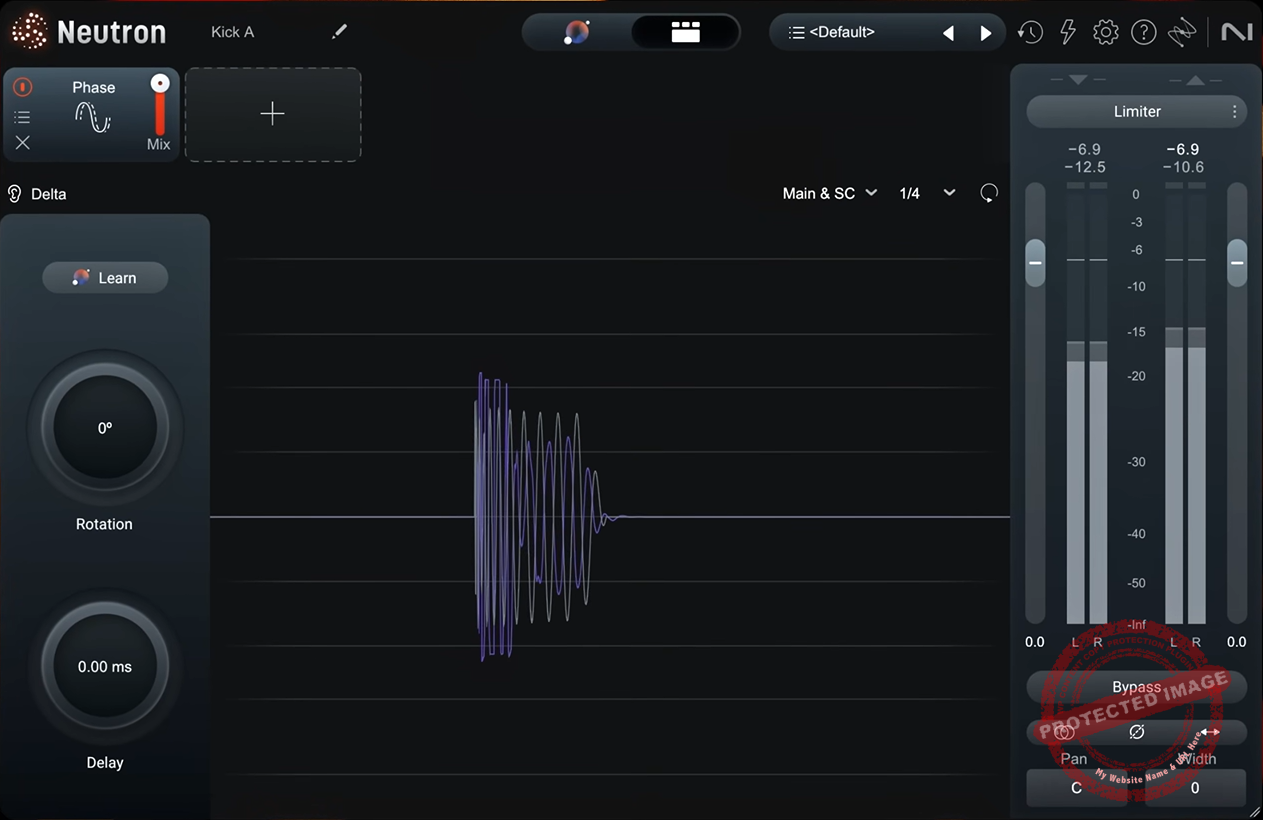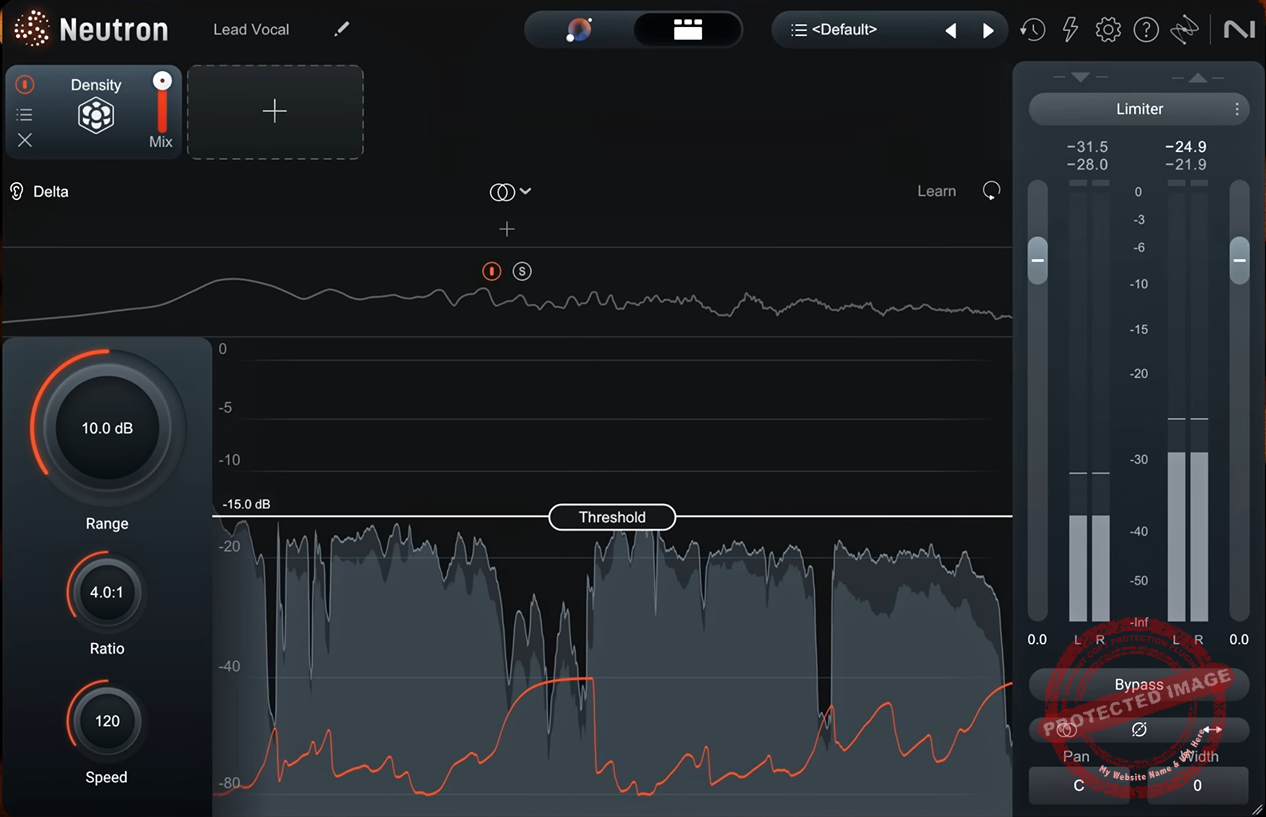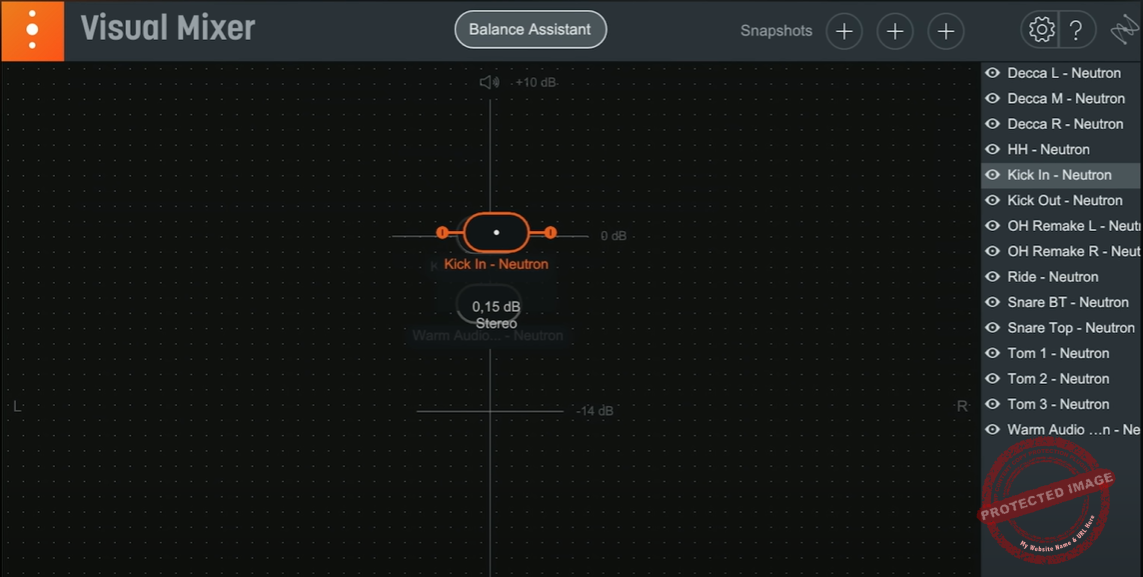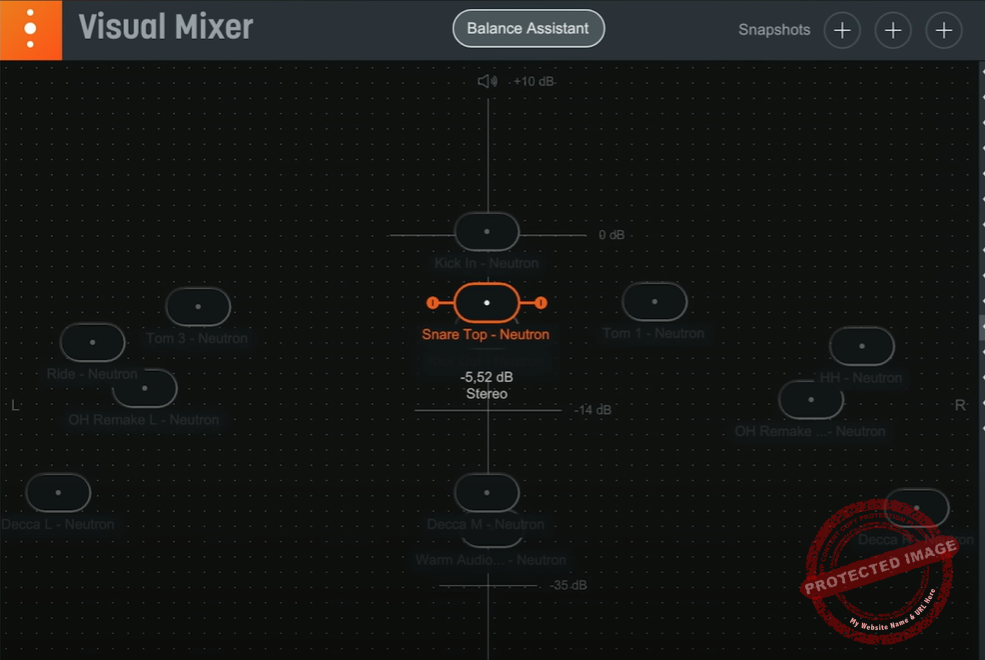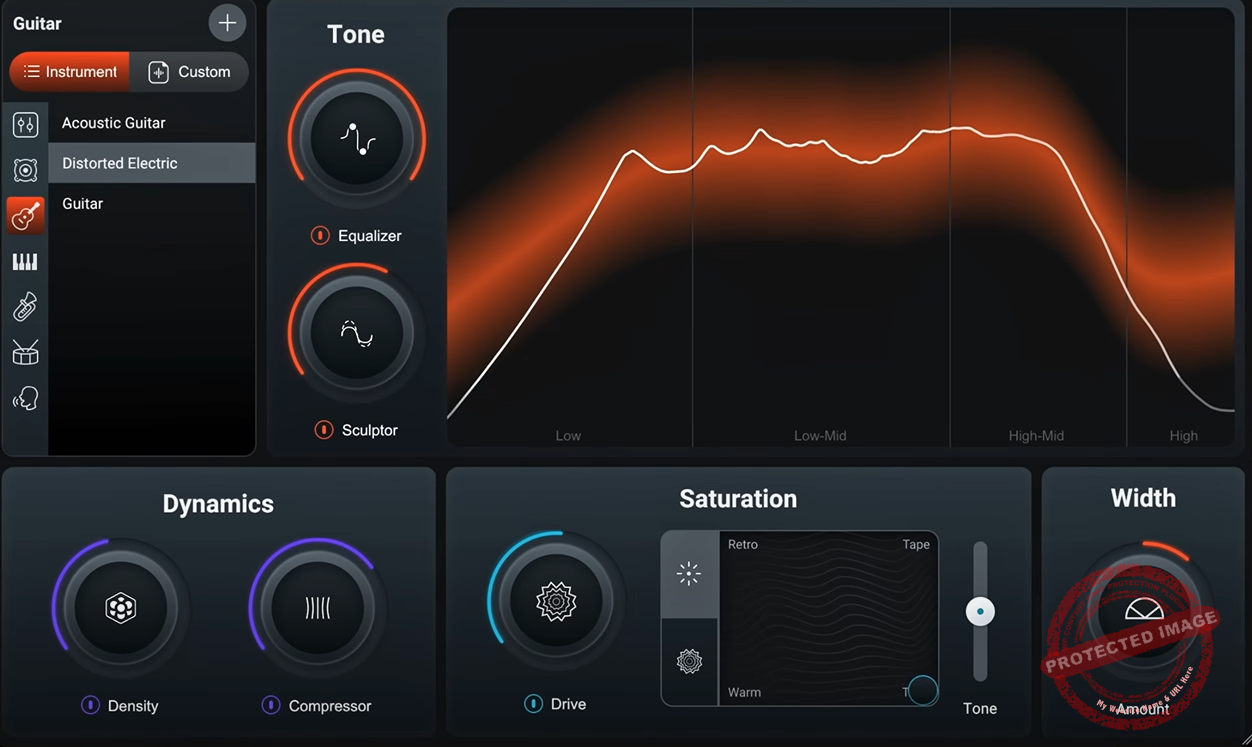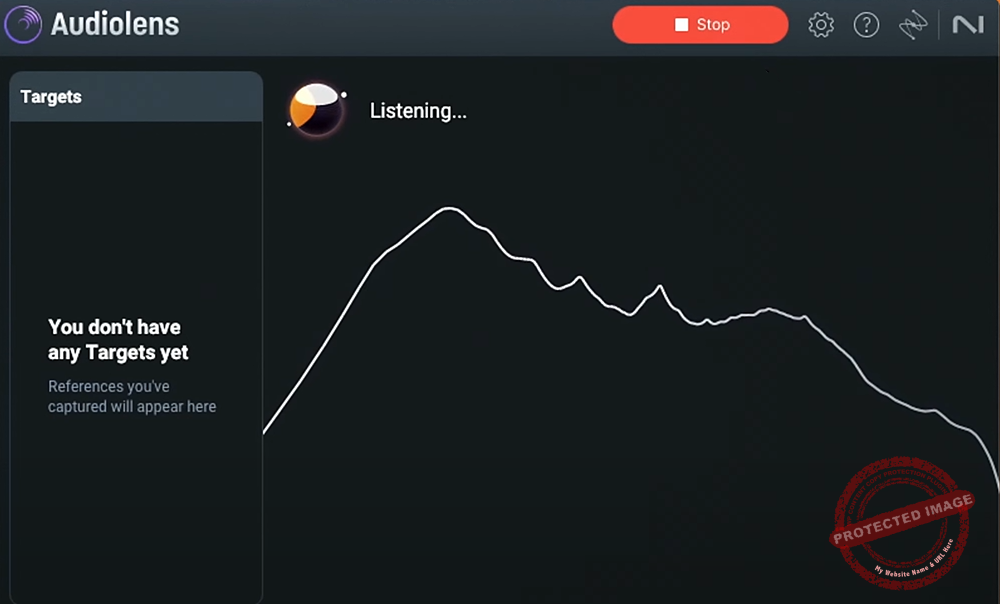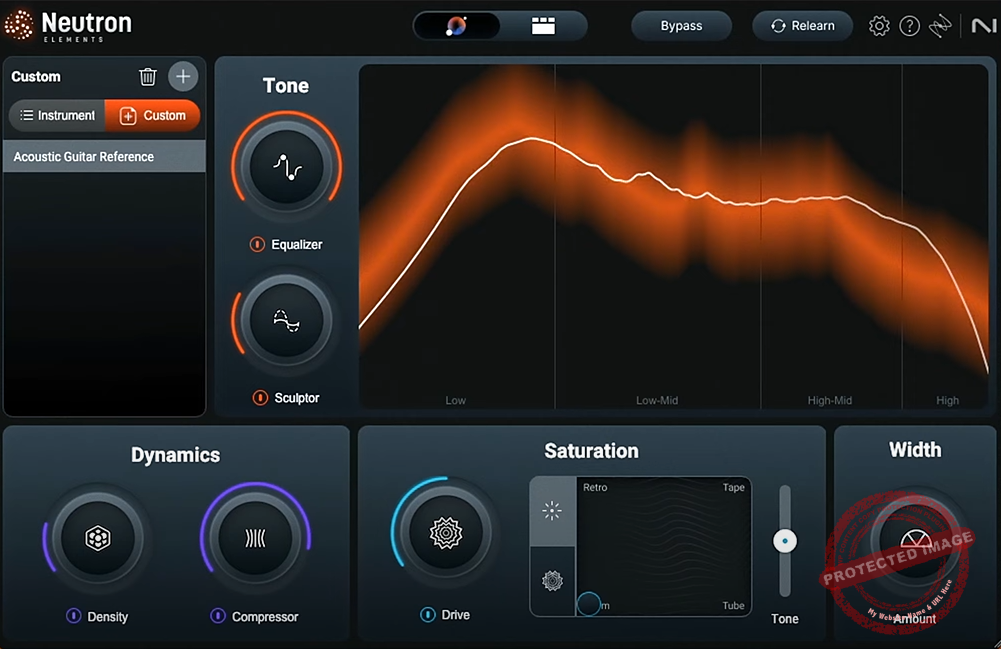If you're looking for an all-in-one plugin suite for mixing, Neutron 5, in 2025, with all its innovation, updates, and utility, could be a strong contender. With practical new modules like Density, Phase, and Clipper, alongside enhancements like Mid/Side and Transient/Sustain processing, it offers a lot of versatility and use. While the AI tools like Mix Assistant can still be hit-or-miss, they’re useful for jumpstarting mixes. Though not cheap, the suite’s comprehensive feature set and user-friendly design justify the investment for those seeking a modern, streamlined mixing solution.
Pros
- Clean, modern sound processing with versatile tools for all mixing needs.
- Density module adds excellent upward compression for dynamic sources like vocals and acoustic instruments.
- Phase module effectively resolves phase issues in multi-mic or layered setups, saving time and effort.
- Clipper provides soft-clipping with multiband, Mid/Side, and Transient/Sustain capabilities for detailed control.
- Mid/Side and Transient/Sustain modes enhance precision across all modules.
- Mix Assistant offers a great starting point for mixes, speeding up workflow.
Cons
- AI tools are helpful but still inconsistent and require manual intervention at times.
- Some features, like upward compression and phase alignment, are available in other plugins or DAWs.
- The Mix Assistant can misclassify tracks, leading to less accurate initial results.
- High price point may not justify the upgrade for users with previous versions.
- Requires a learning curve to fully utilize advanced modes like Mid/Side and Transient/Sustain.
I will be putting Neutron 5, its latest updates, and all its 11 plugins and modules under a microscope to review if it’s a worthy investment in 2025 or not?!
If you’ve ever sat in front of a mix, endlessly tweaking knobs, questioning your life choices, and wondering why your snare sounds like a wet cardboard box, welcome to the club.
I’ve been there, too, staring at my screen, hoping some magic plugin will come along and fix everything. While no plugin can ever do the mix for you, Neutron 5 can do a lot of work and may steal some steps for you.
Neutron 5 is a suite of 11 plugins with simple functions, such as one being a compressor plugin and the other being a clipper, but how they work together in cohesion is where the “sales pitch” for Izotope is. I will be breaking down this bundle and opening the discussion of whether Neutron 5 is still a “big deal” in 2025.
With FabFilter launching Pro-Q4 with everything possible imaginable with an EQ plugin, from AI-based resonance deduction to drawing EQ curves or Waves latest AI plugins in the market, is this Izotope bundle worth your investment as a mixing engineer and music producer?
Moreover, I am reviewing this because, like you, I’ve wasted way too much time jumping between plugins, second-guessing every EQ move, and convincing myself that “maybe this mix is fine” (spoiler: it wasn’t). The struggle is real, and I wanted to see if Neutron 5 could actually make mixing easier instead of adding another layer of complexity.
I will also discuss the new additions for those considering an upgrade from Netron 4. So, let’s dive right into the review.
Features
If you’ve used Neutron 4, you’ll notice some visual tweaks and speed improvements, but the real stars of the show are the new modules and AI-driven tools. Let’s take a look at what’s new and, more importantly, whether these features actually help in a real mix.
- Phase Module
I think the Phase Module is one of the most exciting additions. You will agree with me if you’ve ever struggled with phase issues in multi-mic recordings, drum overheads, or layered bass tracks, as you know how frustrating it can be to get everything lined up just right.
This tool takes the headache out of phase correction by automatically analyzing and adjusting phase relationships with a single click of the “Learn” button.
I tested this on a multi-mic drum setup, and the difference was night and day. Suddenly, the kick and snare felt tighter, and the low end stopped fighting itself. Even for voiceovers and podcast editing, this feature helps clean up phase inconsistencies, making compression and EQ much more effective.
- Density Module
The Density Module is like having an intelligent mix glue button. It uses upward compression to bring out quieter details while keeping the louder elements in check. The result? A mix that sounds fuller and more cohesive without feeling overly compressed.
I found this especially useful on acoustic guitars and vocals or other sources that need a little extra presence without losing their natural dynamics. Plus, using Density within Neutron’s Mix Assistant speeds up workflow, making it easier to achieve that polished, radio-ready sound with minimal effort.
- Mid/Side and Transient/Sustain Processing
Neutron 5 takes stereo processing to the next level with enhanced Mid/Side and Transient/Sustain Processing. Unlike previous versions, this update allows you to separately tweak mid and side frequencies, giving you way more control over your mix.
For example, I used this to widen a synth pad by boosting the highs only on the sides, leaving the mids untouched. That resulted in a spacious, open sound without muddying the center. Similarly, I was able to shape drums by applying transient processing only to the attack while letting the sustain breathe.
- Visual Mixer & Tonal Balance Integration
The Visual Mixer in Neutron 5 is even more intuitive now, allowing you to adjust the pan, width, and volume for all your tracks in one place. This means no more jumping between multiple plugin windows just to make minor tweaks.
When paired with Tonal Balance Control, this tool helps keep your mix in check against professional references. I used it on a dense rock mix and instantly saw which areas needed balancing. Instead of guessing, I could visually adjust levels and EQ, making the whole mixing process faster and more accurate.
While Neutron 5 isn’t a complete reinvention, the improvements here are practical and time-saving.
The new modules, smarter AI tools, and refined workflow enhancements make it a serious contender in the world of mixing plugins. Whether you’re competing with FabFilter, Waves, or other AI-driven solutions, Neutron 5 brings enough firepower to justify the upgrade.
Interface & Workflow
At first glance, Neutron 5 looks clean and professional and features a modular approach, allowing you to stack and arrange processors like EQ, compression, transient shaping, and more. I really like the clearly labeled controls and real-time visual feedback that keeps you informed about what’s happening to your audio.
With the Visual Mixer, you can drag elements around a 2D space to adjust their level, pan, and width instead of tweaking faders and panning knobs traditionally; it feels like mixing with a virtual soundstage rather than a rigid set of parameters.
However, while it’s great for a quick mix balance, I still prefer diving into each track individually for fine-tuning. But, that’s just me being super picky.
Sometimes, AI gets things almost right but needs a little human touch. With just a few more tweaks the mix reaches the point.
Another notable addition is the Balance Assistant, a feature that listens to your mix and suggests level adjustments based on instrument classification. You only need to give it a solid starting point.
While it does an excellent job of giving you a balanced mix, I found that I had to reclassify certain instruments manually. Neutron identified overheads as cymbals rather than full-kit mics, which isn’t how I typically approach drum mixing. But once dialed in, the suggestions were solid and saved me a ton of time.
These are the plugins you can add to your plugin chain: Clipper, Compressor, Equalizer, Density, Exciter, Gate, Phase, Sculptor, Transient Shaper, Unmask, and Visual Mixer. You can use these plugins as a combination in Neutron’s plugin chain or separately.
Besides, the interface commonly amongst all plugins is resizeable, and each plugin has its own bypass button, input-output decibel meters, and pan, width, and phase reversal controls, all sitting in the sleek and straightforward Izotope plugin design.
First Impressions and Sound
Let’s get straight to the heart of Neutron 5: how does it sound, and is it versatile enough for different use cases? Ultimately, the sound quality and practical application of its features determine whether it’s a worthy upgrade or just another flashy update.
Sound Quality
The first thing that struck me about Neutron 5 was how clean and precise it sounds. Let’s talk about the Phase Module. If you’ve ever spent hours trying to fix phase issues between multi-mic recordings or layered bass tracks, you’ll know what a nightmare it can be.
I love how this plugin lets you use reference tracks for mixing. I threw it on a drum mix, hit the “Learn” button, and got a tight, punchy low end, and no more fighting between the kick and overheads as output. The difference was night and day, and honestly, this alone makes Neutron 5 worth a look if you’re constantly battling phase gremlins.
I also loved the upward compression in the Density Module. Think of it as your new best friend for gluing a mix together without squashing the life out of it. I tested it on some acoustic guitars that were a bit too dynamic (read: all over the place), and it brought out the details beautifully without turning the whole thing into mush.
The vocals also sounded pretty present, polished, and still natural. This is the kind of feature you didn’t know you needed until you used it, and now I can’t imagine mixing without it.
Versatility
Neutron 5 isn’t just a “one-size-fits-all” plugin. Whether you’re producing electronic bangers, mixing live recordings, or even working on a podcast, this suite adapts. And features like Mid/Side Processing and Transient/Sustain Processing take that adaptability to the next level.
For example, I had a synth pad in one mix that felt too narrow and dull. With Mid/Side Processing, I boosted just the sides in the upper frequencies, leaving the mids untouched. The result? A lush, wide pad that felt alive and airy without stepping on the lead vocal. On the flip side, I used the transient tools to give a snare more attack without messing up the sustain—it was like surgically enhancing the groove.
Compared to iZotope’s other flagship bundles, like Ozone for mastering and RX for post-production, Neutron has always been the approachable sibling. It’s like a friend who’s equally comfortable helping you fine-tune a bedroom demo as they are tackling a complex mix for a big client. And that’s no accident.
Real-World Use Cases
Here’s where Neutron 5 really shines: it works on everything. Do you have some dialogue that’s too quiet? The Density Module will lift those whispers without making them sound over-processed. Dealing with a multi-mic drum setup? The Phase Module will save you hours of manual alignment.
Even for synth-heavy tracks, the transient tools and EQ are powerful enough to shape your sound exactly how you want.
For me, the suite proved its versatility when I tested it on a dense electronic mix and a live acoustic recording in the same session. In both cases, I could tailor the processing to fit the genre and vibe perfectly. It felt like having an assistant who knows exactly when to stay out of your way and when to step in and help.
Whether you’re a bedroom producer, a guitarist layering tracks for your band, a soundtrack composer juggling orchestral stems, or a seasoned engineer polishing a mix for radio, Neutron has something for you.
But it’s not just the tools, it’s also the design philosophy. Neutron is built to be accessible, and at the heart of that accessibility is the AI-powered Mix Assistant.
The Mix Assistant has been refined for Neutron 5, and while it still won’t replace human intuition, it’s better than ever at providing a solid starting point. The updated Assistant View is a simplified interface that gives you macro controls for the AI’s suggestions, making it easy to tweak and refine without diving deep into every module.
Even better, each module now features a Delta button that isolates what the plugin is doing to your audio. That makes it super easy to hear the exact changes being applied, and it is a fantastic learning tool for newer users and a time-saver for pros.
Compatibility
Neutron 5 is available in AU, VST3, and AAX plugin formats and is compatible with Windows 10 or later, macOS Ventura (13.6.9) and macOS Sonoma (14.6.1) operating systems.
Conclusion
Neutron 5, undoubtedly, is the modern and smart new-age mixing solution and is bringing about the required evolution in workflow for audio engineers and producers. Tools like these are the next step in this process and can also make the overall workflow really efficient and smooth.
We all know how stacking plugins in a modular workflow format has been an Izotope plugin thing that we have all appreciated in previous versions of Neutron as well. I would say it’s not groundbreaking what the new update is, but it is still a step in a positive direction. Yes, the AI tools still need work, but the improvements to core modules like Phase, Density, and Mid/Side Processing are promising, and I also look forward to the sixth version of Neutron.

Shaurya discovered his passion at the intersection of writing and music. Starting his career as a songwriter and rapper, he gradually picked up FL Studio and soon delved deep into the world of audio engineering and music production. Based in Delhi, India, he has worked with top studios, been featured on Red FM, garnered millions of streams on Spotify, and released music with major labels like Sony and Hitz.

